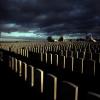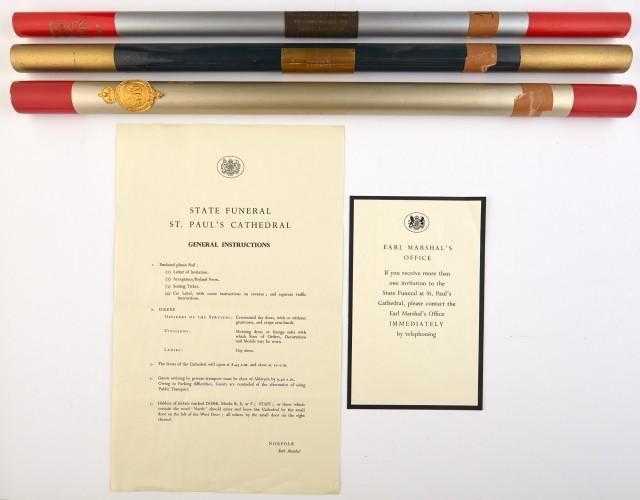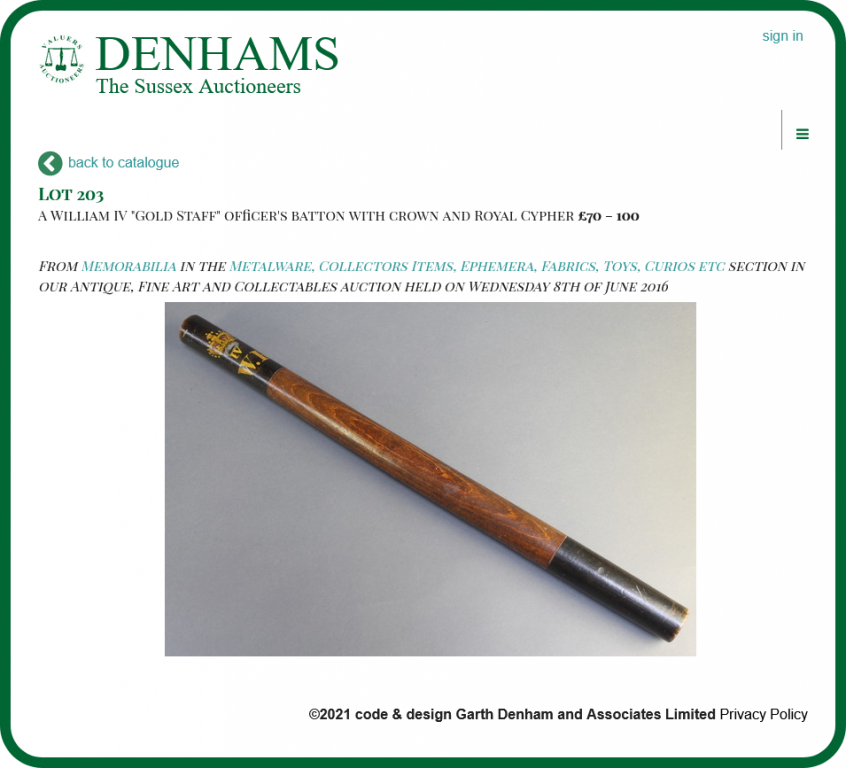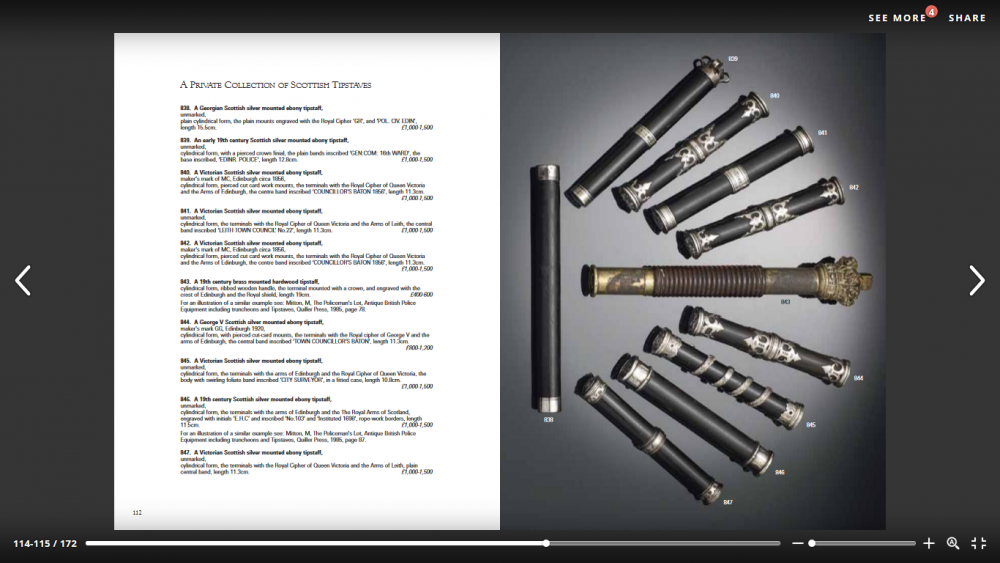-
Posts
104 -
Joined
-
Last visited
Content Type
Profiles
Forums
Blogs
Gallery
Events
Store
Everything posted by Nightbreak
-
As an update after the coronation of Charles III, Gold Staff Officers were spotted in the parade. It appears as if Charles' baton is similar to his mother's, with a gold staff and light blue ends. The image here is from Wikipedia. Lt-Col. Nana Kofi Twumasi-Ankrah, MVO, of the Household Cavalry. Good to know that this tradition endures.
-

Victorian VR Truncheon
Nightbreak replied to davew's topic in Great Britain: Mervyn Mitton's British & Colonial Police Forces
You're welcome, Davew. My commiserations for the result, but this adds to your experience and knowledge in the long run. And as long as you enjoy it, that's a good thing in itself. Andrew -

Victorian VR Truncheon
Nightbreak replied to davew's topic in Great Britain: Mervyn Mitton's British & Colonial Police Forces
It's apparently the coat of arms of the Institute of Directors, a British professional organization founded in 1903, but the arms weren't granted until 1952. So this appears to be of recent manufacture. https://www.heraldry-wiki.com/heraldrywiki/wiki/Institute_of_Directors -

Victorian VR Truncheon
Nightbreak replied to davew's topic in Great Britain: Mervyn Mitton's British & Colonial Police Forces
Welcome to the forum and to truncheon collecting! If you could perhaps take a close-up picture of the coat of arms, I can work with the motto and heraldic features to figure out which town it's supposed to represent. Chances are good one of our reference books will have others from that location to compare it to. Andrew -
Dr. Balchin, thank you very, very much for this look at yours and your father's collection. It's wonderful to see another 1911 Investiture Green Staff Officer's baton, too. I acquired mine as part of a package with a William IV Aberdeen short staff, which was what kickstarted this particular interest. I'm pleased to see those three batons from before, and they all look in marvelous condition. Your Order of the Bath Investiture staff is in much better shape than the one I acquired from Australia the other month. I do hope one day that Richard from Vancouver will reappear to tell us more, because it sounded like he had quite the collection of his own. This has become our best resource currently because often the College of Arms can't or won't answer questions about the creation or styles of batons for royal events. It's often beyond their memory or knowledge, to be honest. So people searching Google for information on their items will likely find us near the top of the list. At this point, all we need is someone to produce a Georgian (IV or III) coronation staff, or perhaps ones from a Silver Staff Officer from Victorian Jubilees. I'll be very excited the day a 1969 Investiture baton does appear, if they were even made.
-
Hi, Hugh. Nice to know you have one of these pieces. It would have been Princess Elizabeth's wedding from 1947 before she became Queen, as Richard pointed out above. I don't know if there's a list of those who were ushers for the wedding, if that's what you're asking, but it's possible it could be mentioned somewhere in your Grandfather's career. Do you have an image?
-
It's been nearly three years since this topic was last updated, and I have done as much gathering as I can. Since many Google Searches for phrases like "Coronation Baton", "Gold Staff Officer" and even "Green Staff Officer" bring up this thread, I feel it's become the best Illustrated Reference Guide we currently have. Apologies to Ross for the hijack, but I'm going to add some more information here to fill a few holes, and add some more images for those searching. Whoever scrapes this site for images to add to Pinterest will surely appreciate it. There are batons for not just Coronations, but also for Investitures and Silver Jubilee Thanksgiving Services. I've seen several examples and collected a handful, with an eye to others. We've seen an example in this thread of one for Princess Elizabeth's wedding in 1947, and the possibility exists for funerals, as I've seen one for Churchill's funeral in an auction last year. I have seen batons for William IV, Victoria, and so on up the chain to Elizabeth II. There are some different styles overall. William IV's was *claimed* to be brown with black ends, although it could be a simple misidentification by the auction house (see attached). A Victorian coronation baton is black with gold lettering on both the royal cipher and the year. Edward VII and George V, follow the 'red body with gold ends' format. They measure 30 inches (76 cm) in length This color scheme reverses for George VI, as seen below, although I have found a red with gold ends version. Both come in at 21 inches (53.5 cm) Elizabeth II is shown as a gold baton with blue ends in at least three examples, although again I have seen a gold with red ends version from a fellow collector. It measures 21 inches (53.5 cm) We know those who serve as ushers in Coronations are referred to as Gold Staff Officers. If it's an Investiture, in the case of those for the Prince of Wales in 1911 and 1969, the ushers are Green Staff Officers or Silver Staff Officers. Green appears more often in searches, but I have seen an armband and instruction booklet referencing 'Silver'. The ones from Prince Charles' 1969 Investiture appear to be mostly Heralds from the College of Arms. Silver Staff Officers are from the Silver Jubilee Thanksgiving Services of 1935 and 1977, for George V and Elizabeth II, and measure 21 inches (53.5 cms). The staff shown above that Richard identified as belonging to 'an early Investiture of the Order of the Bath' is because of its three crowns. These appear on the breast Star of the Order. I recently acquired one of my own (seen in this post), and while it's quite battered, it's a nice addition. The gold and black baton with the Duke of Norfolk's crest and Earl Marshal Batons with '48' on it has been tentatively identified as a "household staff". Number 46 was illustrated in a mid-1920s book on truncheons by Erland Fenn Clark. The three batons sold at auction last year from Churchill's funeral consist of the 1977 Silver Jubilee, the 1935 Silver Jubilee, and one black baton with gold ends that purports to be from the funeral itself. I am always interested in other styles, occasions, and mentions of these, and if anyone wishes to add on, I'd be more than happy to learn more.
-

Covid 19 White House coin......
Nightbreak replied to bigjarofwasps's topic in Coins & Commemorative Medallions
I was *wondering* if they'd get around to this one! Note that the "White House Gift Shop" is not affiliated with the White House in any way. The owner is in Pennsylvania and merely trademarked the name. This last sentence is obvious by his collection of "Great Moments In The History Of President Trump" coins. -
The stands are pewter, from a chain engraving shop that sells them as a stand for pewter diploma cases. (The shop has a *lot* of pewter in it!) I went looking for another example of my Edinburgh tipstaff, and the one listed here, No. 103, is classified as 19th century, with no monarch. What a glorious sight this is, though. Woolley and Wallis Silver catalogue from 2011. This must have been from someone's collection.
-
Since we've moved onto Scottish Tipstaves, I figured I'd bring out the three I've picked up so far. William IV, Stirling High Constable, number 24. Formerly John Green's collection. Was never sure if it was the city or the castle. With the number, it makes more sense for the city, in my mind. Haven't seen any others. George III, Carmunnock Constable. Also ex-John Green. Missed out on the long staff, which was sold at an auction the year before this came up. George III Edinburgh High Constable, No. 114. Mervyn felt it was an 1801 or before because the coat of arms, although it does look like it's a crown in the center, rather than the 'elector's cap'.
-
This is one I owned for about 12 hours. I bought this Admiralty Oar off E-bay, only to wake up the next morning and found my money refunded by the seller. They claimed they had accidentally left off a number and thus I'd only paid a third of what they truly wanted for it. I wasn't ready to just hand over a bunch more money on their say-so, and our deal fell apart. Both Mervyn's and Alan's books say if you ever come across an Admiralty Oar, grab it. Even though it's outside my theme, this would have been a prize.
-

FIGURED OUT: Wedding Medal
Nightbreak replied to taylorcoates's topic in Coins & Commemorative Medallions
Eh. Just update us and say what it is. Otherwise one day, someone's going to come across something like it, find your post during research, and scream at their monitor. "WHAT IS IT, TAYLORCOATES? WHAT DID YOU LEARN?" -
I have a suggestion, and I did a bit of looking beforehand, but couldn't reach a satisfactory conclusion. If CM Wood was indeed a RNWMP member, and in Ireland in 1911, he might not be in the 1911 Canada Census, nor as a visitor, in the Irish census. But he should be old enough that there should be indications of someone to match him in the 1901 and 1891 Canadian census records, which are all free and available from both Library and Archives Canada, and Automated Genealogy. Being a member of the Northwest Mounted, the obvious place to look for him would be in the western provinces & territories, although he could have lived in Ontario or Eastern provinces as a younger man. This assumes, however, that he didn't emigrate from elsewhere to Canada in the intervening years and didn't appear in a census count. In that case, there should be a passenger list showing entry to Canada.
-

Researching Medals Awarded to Canadian Soldiers
Nightbreak replied to TheMadBaron's topic in The Great War 1914 to 1918
The "X"s are another form of a checkmark. LAC uses George Bloome as an example card, and his medals were issued, even with an X through them. Same with Major Charles Ingels, whose Long Service Medal I've got, and he was a DSO winner. His B and V are crossed out. The Great War Forum suggests that the medals were not issued until after the war was over, and that includes 1919 in Siberia, so his discharge certificate would show that the medals weren't issued *yet*, and his Medal Index Card shows that the B was indeed entered, and issued. -

Researching Medals Awarded to Canadian Soldiers
Nightbreak replied to TheMadBaron's topic in The Great War 1914 to 1918
At most, he would have the British War Medal, as he was on garrison in the UK only, and not in a theater of war. Setting foot in France, for example, would have qualified him for the Victory. Was this card or something similar included in the PDF? https://www.bac-lac.gc.ca/eng/discover/military-heritage/first-world-war/Pages/read-medal-card.aspx -

Researching Medals Awarded to Canadian Soldiers
Nightbreak replied to TheMadBaron's topic in The Great War 1914 to 1918
There is no database, per se. www.bac-lac.gc.ca/eng/discover/military-heritage/first-world-war/first-world-war-1914-1918-cef/Pages/search.aspx The Service Files at Library and Archives will have the Medal Cards for WWI, perhaps even online if your ancestors' files have been digitized for download. That will tell you Star, War & Victory, and any gallantry medals awarded. https://www.bac-lac.gc.ca/eng/discover/military-heritage/military-medals-1812-1969/Pages/military-medals-honours-awards.aspx This database is for Long Service, both Colonial and Efficiency, as well as Gallantry and Pre-WWI service medals. Coronation and Jubilee, though, would be much trickier. -

Guarantees in Life - Guaranteed
Nightbreak commented on Brian Wolfe's blog entry in News From the Home Office.
Woo. Now I can finally comment, because my alleged item finally arrived and I had the chance to handle it and give it a closer inspection. I asked you for your thoughts on the Dundee tipstaff/short staff, because to my mind, the best source after my books and my own knowledge is having another person give it a once-over. They're not buying it and can resist the siren song long enough to tell me if I perhaps missed something. Despite all my attempts to prove what I saw wasn't real, I still purchased it, because people I trusted said the same thing over and over: "Gut feeling is, it's good. Take the risk."







